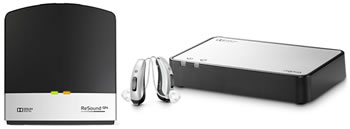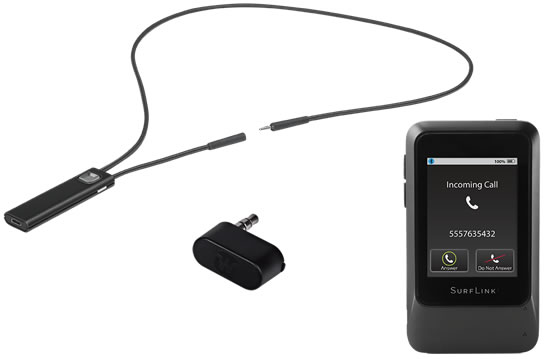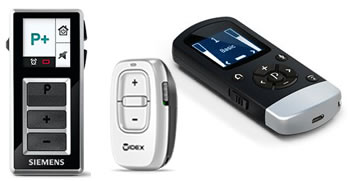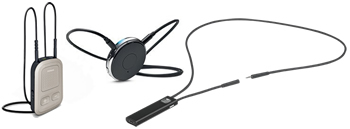Hearing aids can open a world of sound to you. They can make conversation easier, allow you to understand people in noisy rooms, and restore your enjoyment of everyday life. Nonetheless, they are not perfect.
The most significant limitation of a hearing aid is the microphone. Microphones of any type do not have the range of sensitivity that the human ear does. Instead, a hearing aid microphone must be engineered so that it is sensitive enough to pick up sound around us. At the same time, it can not be too sensitive or the hearing aid would amplify sounds far away and make communication more difficult.
As a result, many hearing aid accessories are intended to overcome the limitations of modern microphones. A few common accessories are listed below.
 Remote Microphone
Remote Microphone
A remote microphone is intended to be used by someone who is 8 feet away or more, or may be talking in a noisy room. When used properly, remote microphones capture the speaker's voice and transmit it directly to the hearing aid(s). The result is improve signal-to-noise ratio (the voice becomes louder than the surrounding noise) and better hearing. Some microphones also have audio inputs built in so you may connect an external sound source via an audio cable.
 Audio Streamers
Audio Streamers
Some accessories exist to digitally stream audio to a hearing aid. They are usually connected to a television or radio and send the audio signal directly to the hearing aid. The result is significantly better sound quality and clarity of voices. If you have never tried listening through a streamer, you should try it!
 Phone Interfaces
Phone Interfaces
While many modern hearing aids have Bluetooth and can connect directly to a cell phone, many smaller hearing aids can not. A phone clip is compatible with some hearing aids that do not have Bluetooth built in. They stream audio to the hearing aid(s) and connect to your cell phone via their own Bluetooth radio. They often have a microphone also, so you can talk on your phone without necessarily having the phone close to your mouth.
 Remote Controls
Remote Controls
If you like having some control over your hearing aid and you can not connect a smartphone directly to your hearing aids, you may want to consider a remote control device. These can typically change volume and change the pre-programmed setting in the hearing aid. Some remote controls may offer additional functions.
 Neck Loops
Neck Loops
If your hearing aid is too small for a Bluetooth chip or is a little older than Bluetooth in hearing aids, you may still have options. Most hearing aids, down to the smallest in-the-ear devices, can communicate with smartphones, audio streamers and even remote microphones. The are typically a small module worn around the neck.
Your audiologist can help you decide whether any accessories will help improve your hearing aids' performance. Don't hesitate to ask today.
 903-784-8637
903-784-8637